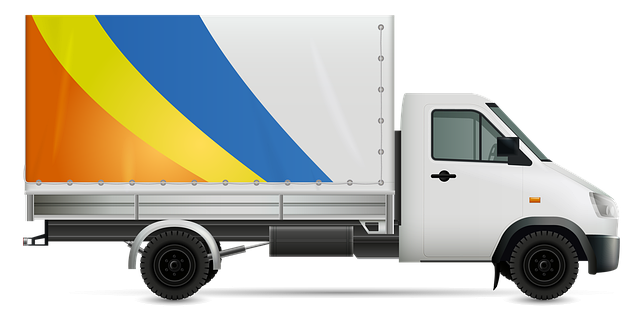Learn how to register your car in California with our step-by-step guide. To begin, understand the state’s requirements for car registration, including necessary documents for VIN (Vehicle Identification Number) verification. Conduct a VIN check to ensure your vehicle’s authenticity. You can complete the process online or visit a DMV office. After approval, pay fees and receive your license plate. Make sure to have all documents in order for a smooth and efficient California car registration experience, including proper vin verification.
- Understand California Car Registration Requirements
- Gather Necessary Documents for VIN Verification
- Perform Vehicle Identification Number (VIN) Check
- Complete Online Registration or Visit DMV Office
- Pay Registration Fees and Receive Your License Plate
Understand California Car Registration Requirements

Before registering your car in California, it’s crucial to understand the state’s specific requirements. All vehicles operated on California roads must be properly registered with the Department of Motor Vehicles (DMV). This process involves more than just filling out paperwork; you’ll also need to ensure that your vehicle meets safety and emissions standards. One critical step is completing a Vehicle Identification Number (VIN) verification, which confirms the authenticity of your car’s details.
In California, a VIN inspection is often conducted by a mobile vin verifier or inspector who can conveniently visit you at home or work. This service streamlines the registration process by providing instant, accurate data on your vehicle’s history, including any previous owners and maintenance records. By ensuring your car passes this inspection, you’re taking a vital step toward registering smoothly and avoiding potential issues with the DMV.
Gather Necessary Documents for VIN Verification

Before you begin the registration process, ensure you have all the essential documents required for VIN (Vehicle Identification Number) verification. This step is crucial as it ensures your car’s history and authenticity are accurately checked. Gather the following: your vehicle’s registration certificate from the previous state, proof of insurance, a valid driver’s license, and the purchase agreement or sales receipt. Additionally, you’ll need to provide a completed California Vehicle Registration Application form.
For a seamless experience, consider using a mobile vin verifier or scheduling a mobile vin inspection. These services offer convenient alternatives, allowing you to conduct the VIN verification process right from your location. This can save time and effort, especially if you’re busy or have limited mobility. With just a few simple steps, you can have your vehicle’s details verified digitally, making the registration procedure much more accessible.
Perform Vehicle Identification Number (VIN) Check

Before you begin the registration process, it’s crucial to perform a Vehicle Identification Number (VIN) check. This step is essential for ensuring that your vehicle is legitimate and has not been reported as stolen or had its identity tampered with. A VIN verification involves using a specialized tool or service, such as a mobile vin verifier or a mobile vin inspection app, to cross-reference the unique 17-character VIN number against authoritative databases.
In California, you can facilitate this process through various online services or by visiting a designated vehicle registration center. The goal is to confirm that the VIN details match the car’s actual condition and history, protecting both you as the owner and the state in ensuring only legitimate vehicles are registered. This step further aids in preventing fraud and ensuring road safety.
Complete Online Registration or Visit DMV Office

You have two options for registering your car in California: complete the process online or visit a DMV office in person. Both methods require accurate information and documentation, including proof of insurance, vehicle ownership, and identification. If you opt for online registration, you’ll need to start by performing a Vehicle Identification Number (VIN) verification. This step ensures that your vehicle’s details match the information provided by the manufacturer, enhancing the accuracy of your registration.
For added convenience, consider utilizing mobile VIN inspection or verification services. These options allow you to get started on the registration process from the comfort of your home or even while you’re on the go. By comparing the data from a mobile VIN scanner with official records, you can streamline the paperwork and avoid potential delays. Either way, ensuring accurate VIN information is key to a smooth car registration experience in California.
Pay Registration Fees and Receive Your License Plate

After completing the registration process and providing all necessary documents, the next step is to pay the registration fees. These fees vary depending on your vehicle type, age, and other factors. You can typically pay online or in person at a California Department of Motor Vehicles (DMV) office. Once the payment is processed, you’ll be issued a unique set of license plates for your vehicle.
Before receiving your plates, a vin verification or vin inspection may be required to ensure the accuracy of your vehicle’s information. This can often be done through a mobile vin service that provides convenient, on-site inspections, saving you time and effort. With these steps completed, your car will officially be registered, and you’ll have the necessary plates to drive legally in California.
Registering a car in California involves understanding state requirements, gathering essential documents for VIN verification, completing an online registration or visiting a DMV office, and paying relevant fees. By adhering to these steps and ensuring accurate VIN check procedures, you’ll be well on your way to securing your vehicle’s legal status in the Golden State.



